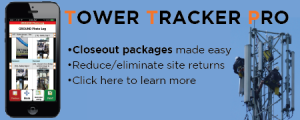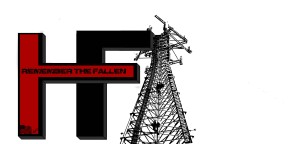Podcast: Play in new window | Download | Embed
Subscribe: Apple Podcasts | RSS
I am excited that we talk of 5G and fixed wireless. Fixed Wireless is where we put a radio up and shoot it to a building or a kiosk or a small cell or even a macro cell. If you’re in the wireless deployment business, then you would call this point to point, PTP, or Point to Multi-Point, PTMP or PMP. We used to call these microwave hops, but in this case, it is broadband to a specific facility. While this has been done for a while, not it’s going to be a viable competitor to ISPs and Cable companies. Wireless is taking over, and we have a shot to change the world here. Not just the carriers, but the small businesses who want to become ISPs really have a shot to provide real bandwidth to business and home customers. WOW! Can you feel it, a new era is rising in wireless broadband!
Don’t worry, I tie this into smart cities at the end.
If you test CDMA and LTE UE equipment, check out the deal on the Anritsu ME7834L here!
First, let’s look at the 5G spectrum. I’m not sure if any of you saw it, but the 5G Americas group put together a great sheet on the 5G spectrum. I have the link so go ahead and download it.
http://www.5gamericas.org/files/9114/9324/1786/5GA_5G_Spectrum_Recommendations_2017_FINAL.pdf
Look at the new bands that the FCC is proposing to use:
- 24 GHz bands: 24.25-24.45 GHz and 25.05-25.25 GHz
- Local Multipoint Distribution Service (LMDS) band: 27.5-28.35 GHz, 29.1-29.25 GHz, and 31-31.3 GHz
- 39 GHz band: 38.6-40 GHz • 37/42 GHz bands: 37.0-38.6 GHz and 42.0-42.5 GHz
- 60 GHz bands: 57-64 GHz and 64-71 GHz (extension)
- 70/80 GHz bands: 71-76 GHz, 81-86 GHz, 92-95 GHz
Tower Safety and Instruction has online training and eBooks
at http://teltech-college.com/ where you can get drone, tower, safety, 5G, and deployment material on your laptop! TSI, making the best better.
If you think this is just ridiculous because you remember that this is merely a point to point short-haul solution, at least if you’re in the business and been around, you might be surprised that both Verizon and AT&T are bidding on Straight Path for their 38GHz licenses, http://www.phonearena.com/news/AT-T-outbid-for-Straight-Path-by-mystery-firm-rumored-to-be-Verizon_id93451 to gain that particular spectrum. Oh yeah, it is real, and it is valuable, and it will be a pain I the ass to engineer. Don’t forget about the Verizon XO deal, http://www.telecompetitor.com/in-pursuit-of-5g-spectrum-verizon-xo-purchase-closes/ where Verizon wants to lease the 28 to 31 GHz and 39 GHz spectrum.
Here it is “The 5G Deployment Plan” available in PDF, Kindle, and Paperback!
Even T-Mobile is getting in on the act, over a year ago they tested 5G on 38GHz, http://www.fiercewireless.com/tech/t-mobile-files-to-conduct-5g-tests-at-28-38-ghz, to see how viable it is.
I don’t see this spectrum as a mobile solution, but more of a fixed solution. This is going to be a thorn in the side of the cable and ISP business model. Why? It’s a new competitor that will have the reach and customer base and savvy to steal those customers. Remember, fewer millennials are watching traditional TV, they watch on demand as most of you do. Don’t deny it, do you really sit down and watch a show at the designated time or do you watch it on Amazon or Netflix or Zulu or with your DVR?
I tell you that I watch it on my DVR, but also on Amazon. I don’t watch much at the time the show airs except live sports. If there is the demand for live TV, sports is it! Even though I can watch sports on a device as well.
So, the push for massive broadband is coming. Those crappy TV packages that they cable companies are pushing will slowly fade away. Seriously, why can’t I get the channels I want and why do they always change the lineup which cancels the one channel I watch? I really hate paying a lot of money for something that I don’t really want, but the cable companies are not changing fast enough in my opinion. However, they do have great internet speeds to the home. I won’t deny that. They have a great model there with the cable modems.
The wireless carriers are going to have to make it cost-effective, so all they need to do is come in lower, about 25%, on price to compete. They can’t come in at the same price because cable is very reliable and I get the feeling wireless will need a year to get there. I think they will need to work out the bugs. Then they will do what they always do, slowly raise the price until you leave.
That is why I am hoping that Legere at T-Mobile makes waves by getting there first. He already said he wants to attack the big cable companies the way that he attacked the big wireless carriers. If anyone can do it, I believe that John Legere can do it. He needs to push into fixed wireless. However, I believe he is too smart to just jump in. I think he will wait for Verizon and AT&T to work out the bugs and then pounce. First isn’t always best when there are problems. So why be first when the technology isn’t quite there? When it is, hammer the deals out to the customer, like he did with mobility. Great job there becoming #3 and pushing into #2.
Of course, CBRS will also be a game changer for those businesses that don’t need 100Mbps.It will allow us to do more in the rural areas. Remember CBRS, 3.5GHz? I love this spectrum because it will be open to more than just the big bad carriers who rule the spectrum. We have a chance to create something great when I say we, I mean the small businesses who must feed off the scraps which the carrier doesn’t own or manage. This may be the most valuable of all because it may not require LOS, a line of site, as shown here, http://www.telecompetitor.com/fixed-lte-in-cbrs-band-not-expected-to-require-line-of-sight-for-fixed-wireless/ for the connections to be made. This opens new doors for connectivity. I think it’s real and exciting! Hey don’t take my word for it, ask Google, http://www.rcrwireless.com/20161117/carriers/google-sees-cbrs-spectrum-band-key-5g-new-model-industry-tag2, and they will vouch for this.
Sign-up to get all your updates!
Don’t miss an episode on iTunes or Stitcher or Overcast
To be fair, the 5G Americas Spectrum document that I reference above also has a quick blurb in it about CBRS, and I quote “Other bands of interest, From the point of view of global harmonization in the 3 to 5 GHz range as the main mid-range spectrum target for 5G, interests have been expressed in use of this range for 5G in the United States. This could potentially include current CBRS band (3.55-3.7 GHz) and beyond (e.g. up to 4.2 GHz).” I believe that the CBRS will play a large part because the carrier doesn’t want to deploy small cells everywhere, in fact, they are going to let that up to the business owners or the landlord to do. They won’t admit this but I think they are looking for a neutral host solution and CBRS is a great solution! Licensed and protected and it could potentially have multiple carriers on one band. If you think this is crazy, have you ever heard of Wi-Fi? Does it discriminate based on a carrier in your home? NOPE! It just connects, so this will be a stepped-up version of that where it will connect, but it may discriminate based on your carrier. Amazing!
The Wireless Deployment Handbook Paperback
 The Wireless Deployment Handbook eBook that covers professional carrier end to end deployment of LTE small cells, CRAN, and DAS showing you the proper way to plan for deployment then execute.
The Wireless Deployment Handbook eBook that covers professional carrier end to end deployment of LTE small cells, CRAN, and DAS showing you the proper way to plan for deployment then execute.
If you want to read more about it, 4G Americas put together a document back in October of 2014, found here http://www.5gamericas.org/files/2414/1323/5229/4G_Americas_Spectrum_Sharing_-_FINAL_Oct_2014.pdf that helps explain CBRS. Go ahead, download it, it’s free!
Why does Fixed Wireless Matter to a Smart City?
Why? Because cities are going to want alternatives to running fiber on poles and underground. The dig once the policy is going to be enforced more and more throughout the USA. The poles are going to be a point of contention among competitors. The access rights and permitting battles will heat up until we find a resolution. The FCC is working to streamline small cell deployments, and the cities are realizing that they must lay out the requirements for a proper installation. If things go as planned, the fixed wireless base stations should be a lot like small cells with batteries. I believe that power is going to be the issue because if the power goes out people still want Internet access. So, this issue needs to be resolved.
The smart city is going to be aware that they need broadband service for small businesses and for kiosks as well as food trucks. They will rely on smartphones, but the demand will grow. As demand grows we come up with new solutions. If you go to a city, you will see stands that sell newspapers, hot dogs, and T-Shirts almost on every busy street. They rely on landlines and smartphones to do business now. It will become a game changer when they can run the online business out of the same small stand that they run the physical business out of. Things change and become more and more advances. As the business grows, revenue grows, the city gains more in tax revenue. It’s a win-win all around.
I am hoping that fixed wireless can be one of the catalysts to help make this happen.
Resources:
- What is 5G? http://spectrum.ieee.org/video/telecom/wireless/everything-you-need-to-know-about-5g
- http://www.5gamericas.org/files/9114/9324/1786/5GA_5G_Spectrum_Recommendations_2017_FINAL.pdf
- http://www.5gamericas.org/files/2414/1323/5229/4G_Americas_Spectrum_Sharing_-_FINAL_Oct_2014.pdf
Be smart, be safe, and pay attention!
The foundations below do beautiful work, helping families in their time of need. Climbers often get seriously injured or die on the job. The foundations below support those families in their time of greatest need!
































